FRUITS FROM THAILANDE
Mangosteen – มังคุด
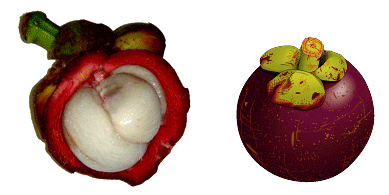
Mangosteen is a round fruit,4/5 cms across. Its thick and purple skin is topped by a green stem. Inside the fruits irregular quarters can be found. Flesh is white with a big smooth stone in each quarter. It is juicy and slightly acidulous, very refreshing and tasty. It is one of the tastiest and best fruits you can find in Thailand. Take care when removing the skin as it stains. It is very rich in vitamin C, E and beta-caroten. It also contains a lot of glucid : 16 % which puts it in front of cherries and mangoes, but it contains few calories (62 Kcal / 100).
Ramboutan – เงาะ
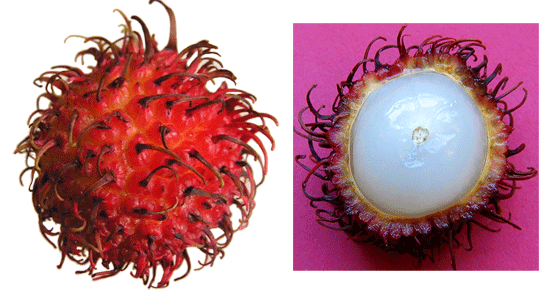
Fruit originating from Malaysia, it name comes from Malay language where “rambout” means “beard”. Its green skin, turning to red when coming to maturity is covered with hair making it look like a small sea urchin. It is quite thin and the flesh is juicy, whitish and translucid, around a big stone. Ramboutan has a sweet, smooth and tasty flavour. It can be used as litchi is. It is full of vitamin C. A variety often grows in the schools yards. Therefore its thai name is : ngo rong rian – school ramboutant.
Mango – มะม่วง
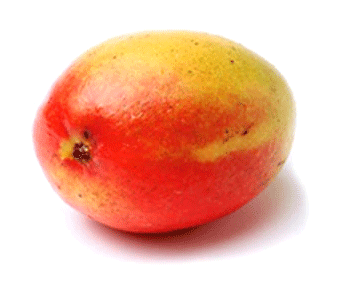
Its nickname is « tropical peach ». Mango is round or ovoid or kidney-shaped. Its skin is green, yellow or scarlet. Flesh is sweet and unctuous. Mango is ripe when little soft when you touch it and giving a strong sweet smell. It can be eaten as it is after peeling it or it can be joined to fruit salads, cereals and sherbets. It is delicious when cooked with poultry, duck or pork.You can also make fantastic jams or mango sweet sauce. It is an excellent source of vitamin A and vitamin C. In Thailand, you can find green (mamouang kio savoy) and yellow mangoes.
Durian – ทุเรียน
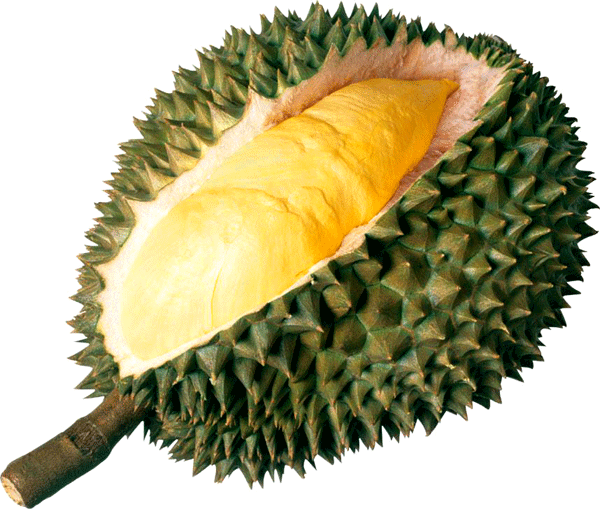
Big fruit (can reach 4 Kg), which has a very thick skin forming a carapace bristling with thorns. When ripe it has a very strong smell, slightly close to gas smell. It smell so much that it is forbidden to bring it in most hotels! When cutting the fruit you will find partitions in which there is a type of big seed surrounded by the fruit flesh. Flesh is sweet and creamy, and taste is quite nice if you forget about the smell. You can eat Durian on its own or as a sweet with sticky rice and coconut milk. Very few europeans like this fruit, as they hate its smell, but thais like it very much. The seeds when roasted or grilled are used as nuts are.
Coromandel gooseberry – มะเฟือง
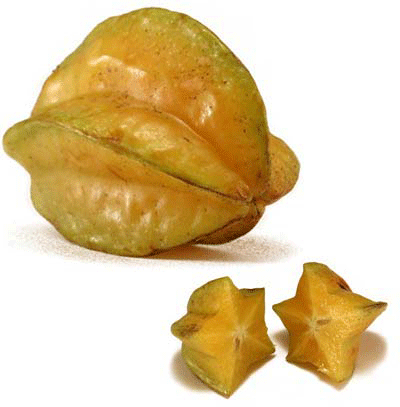
It grows on a tropical tree with persistent leaves, which can reach 5 meters high. Carambola or coromandel gooseberry (also called chinese gooseberry) grows in bunches on the branches and on the trunk. This berry is fleshy and long-shaped with a yellow reddish ribbed skin when coming to maturity. The fruit measures 5 to 8 cms long with 5 salient ribs which make slices look like stars when you cut the fruit. Its translucid flesh is juicy, crispy and little sringy and acidulous like rhubarb. When really ripe it is mainly used for food decoration. It contains a lot of vitamin C.
Cashewnut – เม็ดมะม่วงหิมพานห
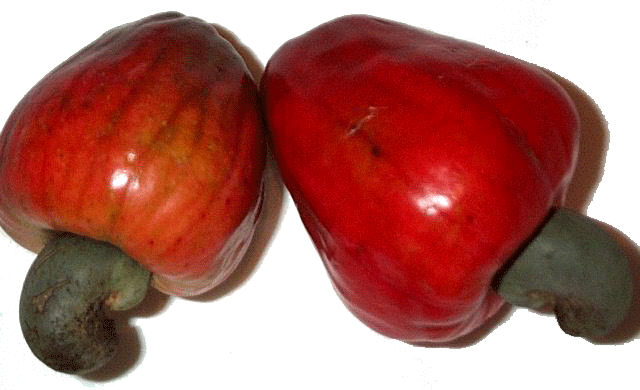
The great saga of the cashew nut starts around 1558 but the first written documents appear in 1578. Portuguese imported anarcadium tree from its native Brazil into India, Africa and Asia; During 400 years cashew nut was grown for its taste, its high vitamin C content and for its medicinal properties. During millenaries, Amazonian native population was using the fruit and the juice of cashew nuts to treat fever and refresh the breath. Tikana tribe, in the North West of Amazon were considering this fruit juice like the best medication to treat warts
On the nearby snap, you can see green fruits where the seed seems over dimensioned versus the “apple” and a mature fruit where the apple took its nice red aspect. The cashew nut as you know it is inside the brown husk which is on the top of the fruit. The juice of this apple can be drunk. It is slightly acidulated and very tasty. When it is not fresh, it evolutes into alcohol. Indians from Goa are transforming it into a white alcohol called “feni” (they also do feni out of coconut).
A nice Indian legend attached to this particular fruit while the seed is outside of the fruit itself: God elaborated a fruit and ended up into something perfect when he suddenly realized he had forgotten the stone.. Not willing to destroy his masterpiece, he decided to add the seed on top of the fruit and since this time cashew nut is as it is now.
The nut bark is composed of 2 shells, one located outside which is fine and green, the other one inside hard and brown, separated by a structure containing cavities in which there is a caustic phenolic resin called cashew balm, used in the industry. In the nut center there is a type of half moon shaped almond measuring approximately 3 centimeter length and surrounded by a white film. This will become after grilling and salting the cashew nut we usually eat.
dragon fruit or pink with white flesh Pitaya
แก้วมังกร
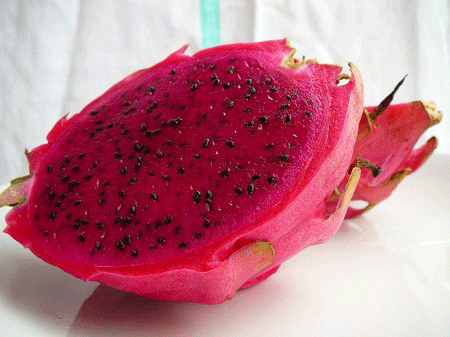
It is the fruit of a epiphytic cactus originating from a rather large zone located in Latin America. The plant is formed by creeping stalks of approximately 6 to 12 m length. Its night white florishing gives a nice perfume close to vanilla one. The fruit skin is flashy pink covered with scales and it can weight approximately 700g. Its white flesh is spread with numerous little black seeds. This fruit has to be eaten when very cold. It is normally eaten with a spoon after being cut in two pieces. For addicts, white flesh pitaya has a smooth and fine flavour very lightly acidulous as a non ripe fruit can be.
Coconut – ลูกมะพร้าว
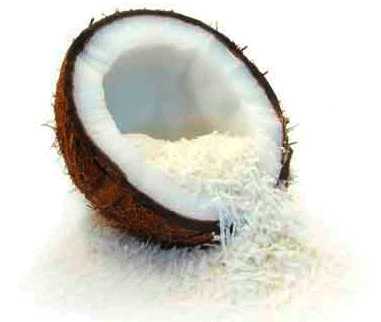
It is floating and following the marine current that coconut tree spread from Asia till all tropical regions. This fruit is protected by a green husk covering a second very hard fibrous light brown colour one. Before coming to maturity, this fruit is full of a milky liquid very nice to drink. Coconut milk will become white and hard pulp when coming to maturity which takes 9 to 12 months. Pulp, eaten fresh and cut into small pieces or grated, is used in several salted or sweet dishes.
– sources : www.thailande-guide.com and www.buddhachannel.tv




